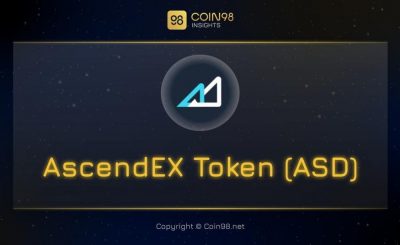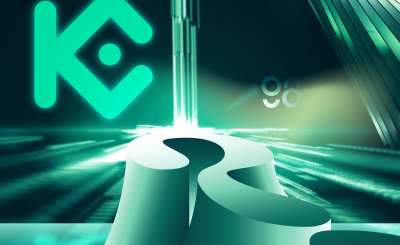DeFi 2.0 is an upgraded version of DeFi, helping to overcome the weaknesses and optimize the advantages of current DeFi. Although DeFi 2.0 has many solutions, at the moment Capital Efficiency branch is the branch that is receiving the most attention.
In the first DeFi 2.0 Stack post, I will list and categorize the projects I’m working on in the Capital Efficiency branch, so you can have a better overview and understand the problems they’re solving.
What is Capital Efficiency?
Capital Efficiency (or capital efficiency) is the ratio between the amount of capital received back to the amount of capital used, the more you get back compared to the capital you spend, the higher the investment has Capital Efficiency. For me personally, the capital in Crypto is something that we need to spend assets to own, this includes tokens and NFTs.
As I mentioned in the post What is DeFi 2.0?, the Capital Efficiency of DeFi is still limited and is the branch that is receiving a lot of attention recently. Below we will list and classify the projects we are working on in this Capital Efficiency branch.
Note: The article has quite a wide coverage with many terms, you can refer to it term library of Techtipsnreview in the process of reading the article.
Overview of Capital Efficiency projects
Although the nature of projects is aimed at optimizing capital efficiency, there are many different audiences and approaches. I will list and categorize projects with you so that we can easily identify DeFi 2.0 projects during the search for investment opportunities.

Unlock Collateral Assets
Lending is an important piece of DeFi and is accounting for a large share of the total TVL of the market. Considering Ethereum alone, this number has reached more than 32%.

To borrow in DeFi, collateral is required, but currently the amount used as collateral is limited (you can refer to the article Lending analysis to understand more about Lending arrays in DeFi). Thus unlocking collateral is a potential multi-billion dollar market.
Accepting new types of collateral not only helps to optimize capital efficiency, but also creates a premise for many new models to develop, helping to generate higher profits. Below are projects that help unlock collateral.
first. Abracadabra Money
A Lending Protocol has a very similar operating mechanism to the Maker DAO, acting as a central bank with the use of collateral to borrow or mint MIM – the platform’s stablecoin.
A special feature of Abracadabra is that it supports ibtokens (interest-bearing tokens) that are not currently supported by the market. From there, it opens up a new market and helps users generate more yield.
2. Inverse Finance
A suite of products includes: DCA vault, which helps users optimize and get the yield tokens they desire, and Anchor, a hybrid version of Maker and Compound.
Anchor can be considered an upgrade because the product allows users to mint DOLA (the stablecoin of the system) and can use DOLA as collateral to borrow assets within the protocol itself. This helps to create many new tactics to help optimize the efficiency of the user’s capital.
3. Alchemix
The project helps users to send assets to issue Synthetic tokens (DAI > alDAI, ETH > alETH). Deposited assets will be rotated to generate profits and automatically repay users.
In the upcoming upgrade, Alchemix has announced plans to support more asset classes, in addition to integrating with yield aggregator projects to help expand its features on those platforms.
Protocol Own Liquidity
I’m sure many of you are no stranger to farming, when new projects are launched, they often have programs Liquidity Mining to attract users to use the product.
However, this is a double-edged sword, Liquidity Mining program with incentive can attract users and TVL in the short term, but almost all come to an end: APY decrease ⇒ Farmer token release ⇒ Stream money transferred.
That’s why we see there are many projects with a very high TVL at first but then rapidly decline.
There are now many projects that recognize this problem and develop products that allow the project itself to control liquidity. Thereby creating a healthy and stable source of liquidity for the long-term development of the project.
List of projects that have been and are being developed under the Protocol Own Liquidity model:
first. Olympus Knife
This is the protocol that develops a treasury-backed currency (Treasury), called OHM. What makes Olympus DAO special is that the project offers a solution to the limitation of Liquidity Mining, helping the project to grow without too much Incentive and keeping a healthy source of liquidity for the protocol.
2. Wonderland
The Olympus DAO fork works on the Avalanche platform. Protocol develops a currency backed by a treasury, called TIME. TIME’s collateral assets are diverse, which can be stablecoins (MIM) or LP tokens (TIME-AVAX LP).
3. Fei Protocol
The Decentralized Stablecoin project, Fei is the first project to develop the Protocol Controlled Value (PCV) model, in other words, the project fully owns TVL. This model is quite similar to Olympus DAO which helps to create a healthier and more stable source of liquidity.
4. KlimaDAO
The project has the same model as the Olympus DAO, but the project’s treasury is backed by “Carbon Credit”. Although it sounds a bit far-fetched, with the application of Olympus’s proven model successfully, and the treasury with real Carbon Credit assets, early participants made a very high profit for themselves.
5. Temple Knife
The project has the same model as the Olympus DAO and has a few more differences in design. Some of the features include a price cap for the token and features to stabilize the $TEMPLE token price.
LP Management (Liquidity Management)
Having stable healthy liquidity is one thing, using them effectively is another. There have been many development projects aimed at increasing the efficiency of the liquidity source in the protocol, resulting in greater profits for the participants. Below are the developing projects in the field of LP management.
first. Uniswap V3
Uniswap latest update, with model AMM Using the traditional Bonding Curve, the liquidity is spread from 0 to infinity. This allows you to swap at any price with any volume.
However, the reality is that token prices often run in a range and lead to underutilized capital. Uniswap V3 helps to solve this limitation, it helps users to provide centralized liquidity at a price range. From there, the liquidity source can be optimized tens, even hundreds of times.
2. Convex Finance
The platform is built to either increase user rewards for staking or provide liquidity for CRV. Convex solves Curve’s problem when users have to stake CRV for a long time and the capital is not optimized, thereby helping users to enjoy a high yield without having to suffer a long staking time.
3. Popsicle Finance
The yield aggregator project is cross-platform, helping liquidity providers to aggregate and provide liquidity in many different places. Thereby optimizing the yield source for participants. The project is quite similar to Tokemak when liquidity will be rotated continuously to generate yield for users.
4. Rari Capital
Synthetic protocol Yield and Yield Farming with community controlled strategies, helps users to profit from fixed assets according to different risk appetite. The reason for the growth of the project is that Rari Capital has supported the Olympus DAO sOHM, thereby creating a new market for the growing number of sOHM holders.
5. Tokemak
The project is about the field of providing liquidity. Specifically, Tokemak will act as a pool, where anyone can deposit assets, that liquidity will be properly moved through governance.
6. Visor
The project helps to optimize the efficiency of liquidity provision on Uniswap v3, users will no longer need to constantly manage their positions manually to get high profits. The Visor will automatically adjust appropriately to optimize the effectiveness of the liquidity provision.
7. Pollen
An Asset Management platform that helps manage the assets in the pool efficiently. Pollen is managed by the community and allows users to choose from different pools depending on their needs.
Interest Swap
Another asset class that you pay little attention to is “interest”, with the rapid development of Crypto, interest can now also be tokenized and traded, thereby creating a new market to help maximize profits. more profit for users.
A few ongoing projects in this area that receive this little attention:
first. Pendle Finance
The project helps users to tokenize future profits, that token can be sold to secure a fixed profit in the future.
2. TimeSwap
The lending/borrowing project is inspired by the AMM model. Instead of depositing assets into pools like in the money market (Aave, Compound), the total borrowed/lending assets as well as the interest rate will change according to the bonding curve model. This is similar to the token price will increase when the number of them is less and vice versa in the traditional AMM model.
3. 88mph
Project about fixed interest rate (fixed-rate yield) allows users to borrow and lend at pre-determined interest rates. In the new version, 88mph has launched the Yield Tokens feature, helping users speculate on different interest rates.
DeFi x Interactive NFT
There have been many DeFi projects started to apply Interactive NFT in many different ways, opening up many new potentials to help attract value to the project and help increase capital efficiency for users.
A few DeFi projects that have pretty clear development plans using NFT:
first. Alpaca Finance
Project on lending and leverage yield farming on Binance Smart Chain. The reason I put the project on the list is because the project has launched NFT and has a pretty clear plan to turn that number of NFTs into Interactive NFTs in the near future. At the same time, the project also has a plan to take advantage of its huge number of TVL.
2. Pods Finance
A project about options array just launched on October 11th. The project has airdropped NFTs to early contributors, and those NFTs will become Interactive NFTs in the future. Owners of these NFTs will have an important role in developing and benefiting from the protocol.
Comments and projections about Capital Efficiency
The projects that get the most attention are the ones that offer the market something new, more productive. And currently there are still many branches that are in the early stages of development and have many opportunities.
Olympus DAO with its success is the origin of the keyword DeFi 2.0. It wouldn’t be too surprising to see fork projects from the Olympus DAO mushrooming during this time. There will be many fork projects that increase extremely strongly, especially in blockchains that do not have “Olympus DAO”, but you must note that Opportunity goes hand in hand with RISK.
Looking for more information: Analysis of the operation model Olympus DAO
Looking at the above list, we can see that most DeFi 2.0 projects focus on optimizing current liquidity sources, thereby increasing the efficiency of users’ capital.
Although the number of projects working on this branch is increasing, each product has different levels of effectiveness, different modes of operation and requires users and investors to really understand the project.
Epilogue
The above is a summary and classification of DeFi 2.0 projects from Techtipsnreview, hopefully helping you somewhat in getting an overview of the current outstanding trend of DeFi.
Note that the number of projects above may not be exhaustive and we look forward to receiving your contributions to help us improve the article. Do not hesitate to comment below to discuss together!
Please register and join Techtipsnreview Insights groups and channels below to discuss with admins and other community members:
Disclaimer: This article is for informational purposes only and should not be considered investment advice. Crypto investment is a very risky investment and you should only participate with the amount of capital you can lose.
Source: DeFi 2.0 Stack – Capital Efficiency Branch Projects Overview
– TechtipsnReview






